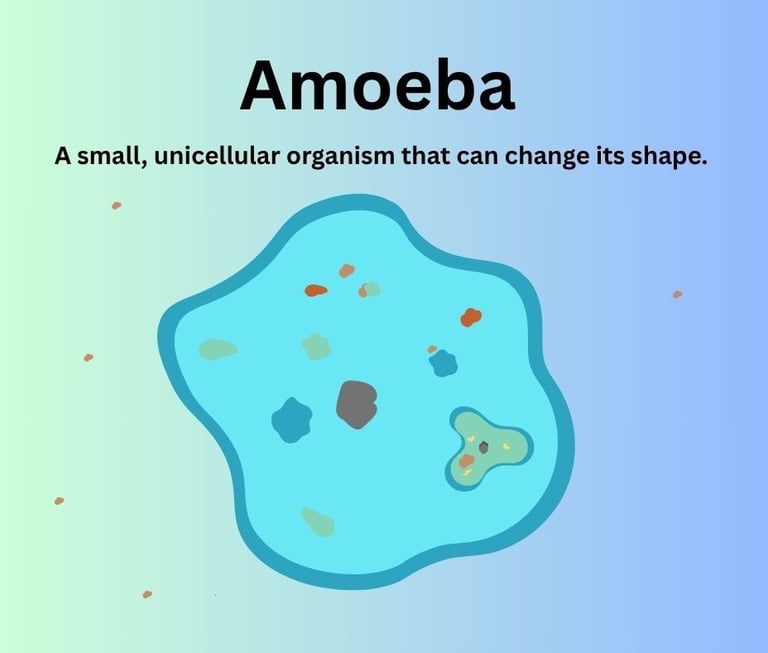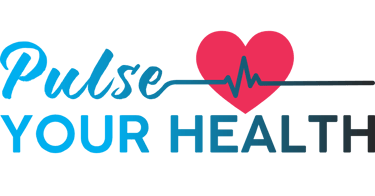Stay updated on what is trending in health. Discover tips and resources for a healthier, balanced life.
Brain-Eating Amoeba: Risks & Symptoms of Naegleria Fowleri
Discover Naegleria fowleri, the rare brain-eating amoeba in warm freshwater. Learn symptoms, risks, treatment options, prevention methods and how to stay safe.
DISEASES AND CONDITIONS
Dr. S. Ali
9/17/20253 min read


What is an Amoeba?
Amoebas are fascinating single-celled organisms that belong to the protist kingdom. These microscopic lifeforms are known for their ability to constantly change shape as they move and feed using temporary extensions called pseudopods (meaning "false feet"). Found in diverse environments - from freshwater lakes and soil to the human body - most amoebas are harmless microbes that play important ecological roles as predators of bacteria and other microorganisms.
However, certain pathogenic species can cause serious human infections. The most notorious examples include:
Entamoeba histolytica (causes amoebic dysentery)
Naegleria fowleri (the so-called "brain-eating amoeba")
Understanding the "Brain-Eating Amoeba"
The scientifically named Naegleria fowleri is an exceptionally rare but extremely dangerous freshwater amoeba. The term “brain-eating amoeba” refers to Naegleria fowleri. Despite the frightening nickname, this amoeba doesn’t actually eat your brain. It causes a serious infection called primary amebic meningoencephalitis (PAM), which affects the brain and is almost always fatal.
Where Is It Found?
Naegleria fowleri thrives in:
Warm lakes, rivers, and hot springs
Poorly maintained or untreated swimming pools
Soil and warm water runoff
Improperly treated tap water
It’s most common in areas with warm climates, especially during the summer months.
How Do People Get Infected?
Infection occurs when water containing Naegleria fowleri enters the body through the nose—not by drinking it. This usually happens during activities like swimming, diving, or jumping into warm freshwater lakes, rivers, or hot springs. It can also occur when using contaminated tap water for nasal rinsing, such as with neti pots or other sinus-cleaning methods, especially if the water hasn't been sterilized or properly filtered.
Once inside the nose, the amoeba travels along the olfactory nerve (the nerve that helps you smell) and reaches the brain. There, it causes a rare but deadly infection called primary amebic meningoencephalitis (PAM). This leads to severe inflammation and destruction of brain tissue, which progresses rapidly and is almost always fatal if not treated very early.
Signs and Symptoms
Symptoms typically begin 1–12 days after exposure and worsen rapidly. Early symptoms resemble bacterial meningitis and include:
Headache – Often severe and unrelenting, worsening with movement.
Fever – High (≥39°C/102°F) and sudden onset.
Nausea and vomiting – Persistent, unrelated to food intake.
Stiff neck – Difficulty bending the neck forward (nuchal rigidity).
As the brain inflammation (encephalitis) progresses, symptoms become more severe:
Seizures – May be focal or generalized, sometimes uncontrollable.
Hallucinations – Visual or auditory distortions due to neurological damage.
Confusion – Disorientation, agitation, or inability to recognize familiar people.
Coma – Loss of consciousness as brain swelling increases.
Note: PAM advances extremely quickly. Even with treatment, most cases are fatal within 5–7 days of symptom onset. Immediate medical attention is critical at the first sign of symptoms after freshwater exposure.
Who Is at Risk?
Anyone can get infected, but children and young adults who swim in warm freshwater are most commonly affected. However, infections are extremely rare. In the U.S., only a handful of cases are reported each year.
Can It Be Treated?
Treatment is difficult and often not successful because the infection moves so fast. However, early diagnosis and aggressive treatment with a combination of antifungal and antimicrobial drugs, including anti-parasitic treatment, may help. A few people have survived with prompt medical intervention and intensive care.
How to Protect Yourself
The best protection is prevention. Here’s how to reduce your risk:
Avoid swimming in warm freshwater during very hot weather
Keep your head above water and avoid activities that force water up your nose
Use nose clips when swimming in lakes or hot springs
Never use untreated tap water for nasal rinsing (like in neti pots)—use sterile or distilled water
Properly chlorinate and maintain swimming pools
Final Thoughts
While the thought of a “brain-eating amoeba” sounds terrifying, remember that infections are extremely rare. Awareness and a few simple precautions can go a long way in protecting you and your loved ones. Stay informed and stay safe.
Sources
Centers for Disease Control and Prevention (CDC)
World Health Organization (WHO)
https://www.who.int/news-room/fact-sheets/detail/naegleria-fowleri
Mayo Clinic
https://www.mayoclinic.org/diseases-conditions/naegleria-infection
Cleveland Clinic
https://my.clevelandclinic.org/health/diseases/17766-naegleria-fowleri
Texas Department of State Health Services
Pulse Your Health
Empowering you to achieve your health goals.
Contact
© 2025. All rights reserved.
Disclaimer: The content on this website is for informational purposes only and is not medical advice. Always seek the advice of your physician or other suitably qualified healthcare professional for diagnosis, treatment and your health related needs.
